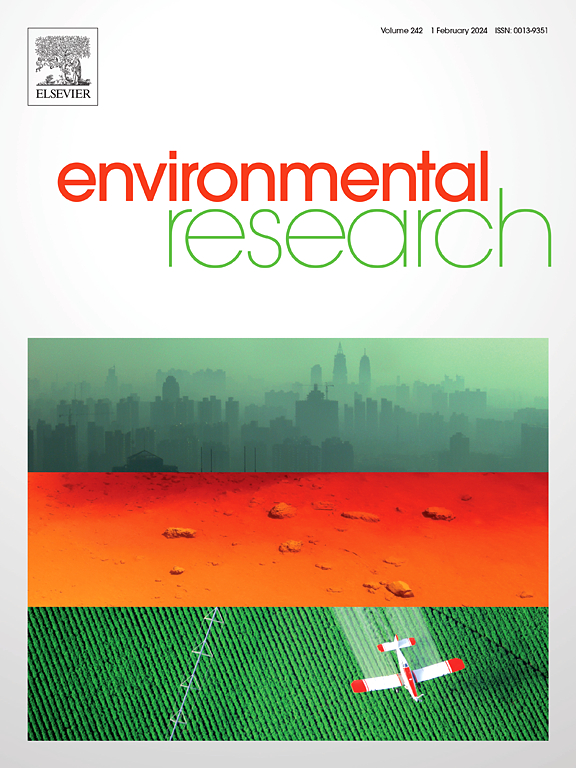河流到海湾沉积有机碳源的变化及其对人类活动的响应
IF 7.7
2区 环境科学与生态学
Q1 ENVIRONMENTAL SCIENCES
引用次数: 0
摘要
人类活动显著改变了河湾沉积物中有机碳的来源和浓度,中小河流对这些变化尤为敏感。本文研究了不同人类活动影响下莱州湾沿岸沉积物及其河流入流中有机碳的来源和固存。总有机碳(TOC)、总氮(TN)、δ13C、δ15N和C/N比值分析表明,南海岸的河流向海洋输送了大量的OC通量。贝叶斯稳定同位素混合模型分析表明,黄小庆河下游有机质主要来源于土壤有机质,污水有机质贡献较小。白浪河、渭河和胶来河的有机质主要来源于污水和浮游植物,反映了人类活动对有机质的显著影响。莱州湾陆地和海洋对OC的贡献分别为57%和43%,其中贝类生物沉积起关键作用。总体而言,人类活动,如污水排放和贝类养殖,显著地改变了河湾连续体中有机碳的来源和贡献。工业、农业和海洋水产养殖活动在形成河湾OC系统方面发挥着关键作用,不容忽视。本文章由计算机程序翻译,如有差异,请以英文原文为准。

Changes in sedimentary organic carbon sources from rivers to bays and their responses to human activities
Human activities have significantly altered the sources and concentrations of organic carbon (OC) in sediments of rivers and bays, and small-to medium-sized rivers are particularly sensitive to these changes. This study investigates the sources and sequestration of OC in sediments across Laizhou Bay and its riverine inflows under varying human influences. Analyses of total organic carbon (TOC), total nitrogen (TN), δ13C, δ15N, and C/N ratios indicate that rivers along the southern coast deliver substantial OC fluxes to the ocean. Bayesian stable isotope mixing model analysis reveals that organic matter (OM) in the lower Yellow and Xiaoqing Rivers is mainly derived from soil OM, with minor contributions from sewage. In contrast, OM in the Bailang, Wei, and Jiaolai Rivers predominantly originates from sewage and phytoplankton, reflecting the significant impact of human activities. In Laizhou Bay, terrestrial and marine contributions to OC are 57 % and 43 %, respectively, with shellfish biodeposition playing a crucial role. Overall, human activities such as sewage discharge and shellfish farming have markedly reshaped the sources and contributions of OC across the river-to-bay continuum. Industrial, agricultural, and marine aquaculture activities play critical roles in shaping the river-bay OC system and should not be overlooked.
求助全文
通过发布文献求助,成功后即可免费获取论文全文。
去求助
来源期刊

Environmental Research
环境科学-公共卫生、环境卫生与职业卫生
CiteScore
12.60
自引率
8.40%
发文量
2480
审稿时长
4.7 months
期刊介绍:
The Environmental Research journal presents a broad range of interdisciplinary research, focused on addressing worldwide environmental concerns and featuring innovative findings. Our publication strives to explore relevant anthropogenic issues across various environmental sectors, showcasing practical applications in real-life settings.
 求助内容:
求助内容: 应助结果提醒方式:
应助结果提醒方式:


